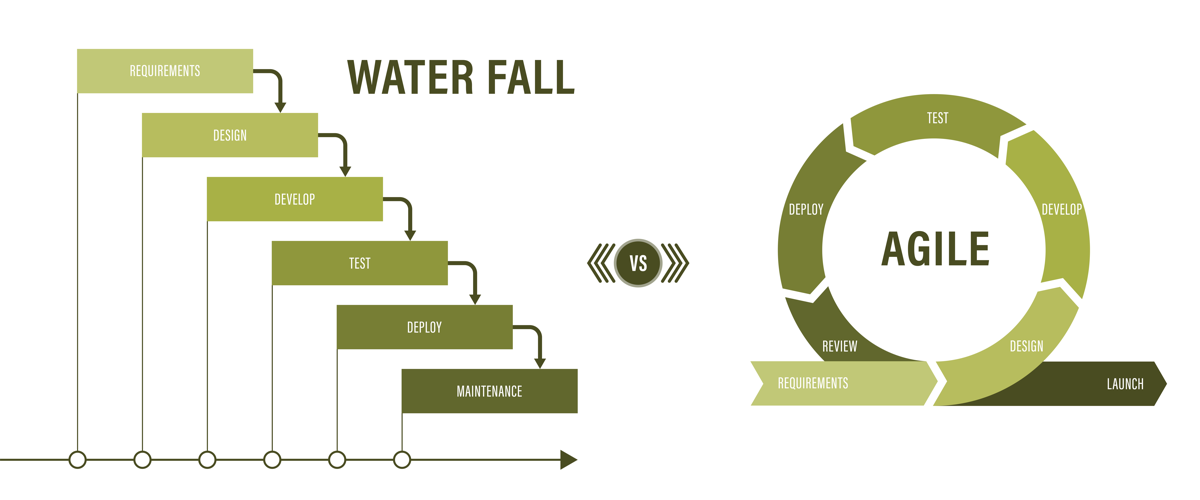Best practice ASP.NET project management for on-time delivery
5 min read
Topic:
ASP.NET Development Services
In terms of software development, one of the most important qualities you'll want to embrace as often as possible ultimately comes down to predictability.
Not only does predictability allow you to consistently achieve your goals, but it's also a great way to make sure that your project is moving along at the rate you need it to. It helps you better understand where you are and how far you have left to go at any given moment, which in turn puts you in a better position to make strategic adjustments as time goes on.This is why it's always recommended to break projects down into smaller, bite-sized chunks using an Agile Methodology. These two-week periods are often referred to as sprints, and as a direct result of them even the largest IT projects are better managed and have a much better chance at being both on-time and on-budget. They're also an important contributing factor to why the Agile software developments methodology is ultimately better at dealing with change in the middle of a project, too—especially when building custom software solutions that require ongoing flexibility and refinement..
The Waterfall Approach vs. the Agile Approach
All of this is in contrast to the "old school" way of approaching software development, which itself was called the "waterfall approach." The waterfall approach is named that because each task in the project cascades into the next task like water going down a waterfall. Essentially, it’s all sequential. The challenge that developers often experienced with this approach is that it required an enormous amount of up-front planning. It’s like building a high rise building where every aspect of the building is designed by the architect before construction begins. This may work for the construction industry but it’s not ideal for software development because of the high up front cost of design and its inability to adapt to change in the middle of a project.
With waterfall, if a developer misinterprets the specifications or if there was any other kind of communication error present, the time to discovery can be long - and the time to correct the mistake can be even longer. Not only that, but it would also require the refactoring of significant amounts of code that the team had already spent so much time and effort developing.
Complicating things is the fact that if you're in the middle of designing a large project, it's not exactly easy to understand the bigger picture because specifications can easily become hundreds of pages long. Thus, it's far too easy to overlook major design flaws until it's just too late. When software specification requirements get this large, it also becomes information overload for both the stakeholder and the developer - further increasing the chances that these problems will rear their ugly heads.
This is all part of the reason why an Agile approach to project management for ASP.NET is critically important, especially when working with an ASP.NET Core Consultant or a dedicated asp.net development company. Not only does it enable the project to move forward efficiently, it also creates opportunities for review between sprints. It is always much easier and more efficient to identify and correct an issue that was created in the last two weeks than one that may have developed months in the past. In addition to resulting in an overall better product and a better experience for end-users, it also allows the team to adapt to shifting priorities as well.
A Better Understanding Equals a Better Product
Along the same lines, one of the truly great things about Agile development in an ASP.NET context is that by breaking down web projects into those smaller, more manageable bite-sized chunks, stakeholders and developers are simply able to understand it better. You completely avoid the issue of information overload and you present people with critical data in a way that is easier to digest and completely understand.
This in turn allows all stakeholders to be involved in project elements on a case-by-case basis, all but guaranteed that it can be engineered correctly and that everything will come together to form the cohesive whole it was meant to be.
Under the waterfall method of software development, you literally may not have anything to show to stakeholders for months at a time – beyond a large, unintelligible specification document. Contrast this with the Agile approach, where the user can see finished portions of the program soon after they're completed and on a regular, predictable schedule.
This also goes a long way towards avoiding a situation where, as a project is nearing its completion, something major or unexpected is discovered. Rather than potentially throwing out months of work, you can fix a more manageable issue and carry on through to the end of the development cycle with minimal interruption.
This brings with it a host of benefits, essentially all at the exact same time:
- Stakeholders can begin giving critical feedback as early on in the project as possible, allowing developers to pivot and make changes as necessary.
- Design flaws can be captured and resolved very early after they appear, allowing you to stop a small problem now before it has a chance to become a much bigger (and more frustrating) one down the road.
- If stakeholders can see something that fundamentally works, it leads to better and more productive discussions about how to improve the product as it is being built. This is very hard to achieve when all feedback is based on a static requirement document.
- It gives people a "universal language" to work with, so to speak. More often than not, stakeholders are not IT literate. Because of that, they find it hard to visualize how an application will eventually work. By seeing a portion of the application that they can actually interact with, it becomes a powerful communications tool. This in turn creates much better and more objective feedback from stakeholders.
Finally, one of the biggest benefits of the Agile approach to ASP.NET development occurs when you eventually get to deploy the application. At this point, you have a much higher user acceptance rate because those actual users were involved in the design of the application from the start. Many of the choices you were making weren't based on gut instinct or intuition - they were based on real problems that users were having and real solutions to solve them. Because of all this, people get very excited to see an idea they proposed in a meeting actually make it into the final web application. To that end, it helps both early user adoption and it helps everyone extract the most value that they can out of the finished product - a true win-win situation in every sense of the term.
At the end of the day, ASP.NET projects - especially large ones - will benefit significantly from using an Agile development methodology. There was certainly a time when the waterfall approach ruled the day - but thankfully, that time has long since ended.
Not only does the Agile approach to ASP.NET bring with it an unparalleled level of flexibility, but it also enables far more predictability throughout the process as well. You don't have to wait for issues to rear their ugly head - something that can take literally months using alternative methods. You know about them as fast as possible, putting you in an excellent position to put a stop to them just as quickly.
Agile ASP.NET project development also brings key stakeholders into the project far earlier than ever, which will nearly always result in a better overall work product and a better development experience for everyone involved. That in and of itself may be enough to make the jump to an Agile development methodology for most teams.
To find out more information about our ASP.NET software development outsourcing capabilities, or if you’d like to discuss your ASP.NET needs with Keene Systems CEO, Lance Keene click here to book a call with him. You can also download our great new eBook - Why ASP.NET Development Services Fuels Business Growth - to learn more about this essential topic.


